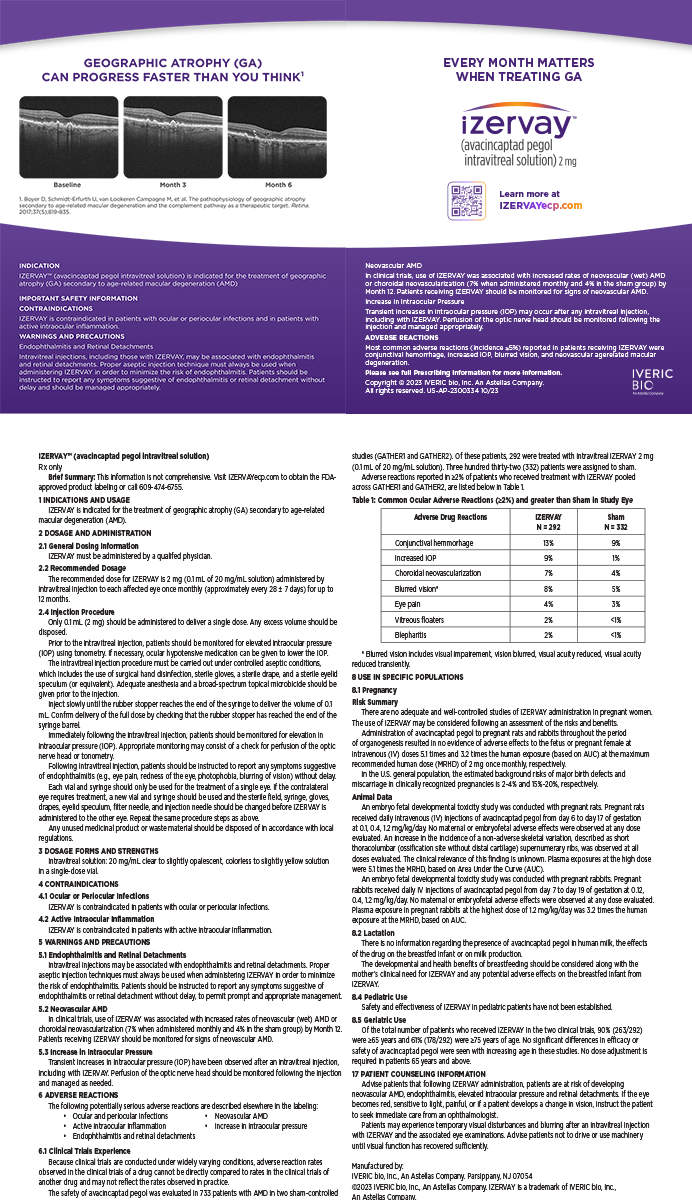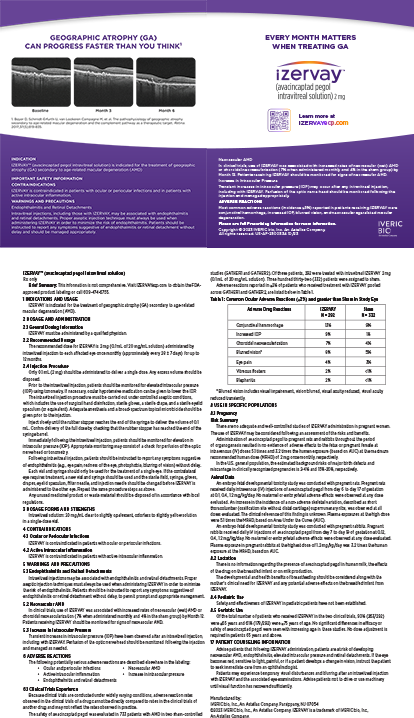The presentation of coincident cataract and glaucoma is one of the most common clinical challenges facing the anterior segment surgeon. Although the only effective therapeutic intervention for a cataract is surgical, glaucoma may be effectively managed either medically or surgically. When you decide to perform a cataract procedure on patients with glaucoma, therefore, you must also determine whether to continue the medical management of their glaucoma or to perform combined cataract and glaucoma surgery.
Cataract surgery performed alone lowers IOP, at least transiently, in a significant percentage of cases,1 and the decrease may be more significant than previously appreciated.2 In addition, recent advances in the medical management of glaucoma have significantly reduced the number of combined glaucoma procedures performed. Despite these considerations, the combined glaucoma procedure remains an extremely important option for some patients, and surgeons must determine the best approach.
WHEN IS A COMBINED PROCEDURE APPROPRIATE?
Although there are exceptions, I prefer coincident cataract and glaucoma surgery in cases of visually significant cataract and
- glaucoma that is poorly controlled despite medical therapy;
- progressive glaucoma in patients who do not comply with prescribed therapy or cannot afford medications;
- progressive glaucoma in patients who are intolerant of medications;
- stable or progressive glaucoma in patients taking three or more glaucoma medications;
- stable, medically controlled glaucoma in patients who choose to reduce or eliminate their need for glaucoma medications;
- far advanced disease with a very aggressive target IOP.
In such cases, the cataract is the primary indication for surgery. That is, an individual with glaucoma has a visually significant cataract requiring surgery. You therefore must decide how to manage the glaucoma. There are also situations in which glaucoma surgery is indicated, and you must decide how to manage the patient's crystalline lens. In many instances, the decision is clear-cut. For example, an obviously cataractous lens in the setting of a planned glaucoma surgery calls for combined surgery. In general, my indications for removing the lens are more liberal in patients scheduled for planned glaucoma surgery. For example, I will remove a marginally significant cataract during a planned trabeculectomy, because I know that the lenticular opacification will likely progress following the glaucoma surgery.
TRABECULECTOMY
After deciding to proceed with combined cataract and glaucoma surgery, you must make several choices regarding management. Although phacoemulsification is clearly the procedure of choice for the lensectomy, there are several options for the surgical management of glaucoma. Each can be combined with cataract surgery.
Coincident phacoemulsification and trabeculectomy remain the gold standard for combined glaucoma procedures. Modern small-incision cataract surgery is an ideal adjunct to trabeculectomy. Debate continues over one-site, single-incision surgery versus separate sites for the trabeculectomy and cataract procedures. Most published studies suggest that one- and two-site surgeries are equally efficacious.3 I commonly use both strategies, depending on the clinical situation. For example, I consider single-site surgery for eyes with excellent exposure and well-dilated pupils, because this approach is efficient and efficacious and it obviates the need for a corneal suture. I favor two-site surgery, however, for most of my combined procedures. This approach is advisable when exposure is more difficult or if you simply feel less comfortable with cataract surgery from a superior approach.
I also prefer two-site surgery when the pupil fails to dilate well, as with patients taking systemic alpha-1 blockers such as tamsulosin (Flomax; Boehringer Ingelheim Pharmaceuticals, Inc., Ridgefield, CT), those with exfoliation syndrome, or those who have bound-down pupils. In such cases, the clear corneal incision provides a frontal entry into the anterior chamber, and the iris is less likely to prolapse into the wound. When performing clear corneal surgery in the setting of trabeculectomy, I place a suture in the corneal wound, because I cannot be certain that the early postoperative IOP will be sufficient to seal the corneal incision.
Although the early-to-midterm results of trabeculectomy are excellent, the bleb remains vulnerable to the healing whims of the conjunctiva, which often results in late failures. The conjunctiva in its natural state is prone to scarring and contraction, ultimately leading to a failed bleb. Although antimetabolites such as mitomycin C and 5-fluorouracil greatly enhance the success of trabeculectomy, the weakened conjunctiva is more prone to late bleb leaks, hypotony, and, perhaps of greatest concern, late infection of the bleb.
BLEBLESS GLAUCOMA SURGERY
Surgery that lowers IOP independent of a filtration bleb is highly desirable. Such a procedure would eliminate much of the risk and morbidity inherent to traditional bleb-based, transscleral filtration procedures. Viscocanalostomy and nonpenetrating deep sclerectomy are based on this concept. Stegmann inspired a resurgence of interest in viscocanalostomy in the late 1990s.4 Although his viscocanalostomy is a truly "blebless" procedure, most versions of nonpenetrating deep sclerectomy rely on the presence of a filtering bleb.
Both viscocanalostomy and nonpenetrating deep sclerectomy rely on the flow of aqueous through an exquisitely thin trabeculo-Descemet's membrane. The procedures are technically difficult to perform and, like trabeculectomy, may be prone to late scarring. Accordingly, they have not been widely adopted by surgeons. Nonetheless, nonpenetrating surgery is an acceptable, safe, and effective means of lowering IOP.5 Procedures of this sort combine well with phacoemulsification.
TRABECULAR BYPASS DEVICES
Renewed interest in procedures involving Schlemm's canal has paved the way for novel, more technologically sophisticated devices that bypass the trabecular meshwork and facilitate the flow of aqueous directly into the canal itself. These stents and shunts are investigational devices that represent the most recent efforts toward blebless glaucoma surgery. Such procedures are based on the premise that the pathology in the physiological outflow system is in the juxtacanalicular portion of the meshwork or within the inner wall itself. By bypassing the proximal trabecular meshwork, these procedures facilitate the flow of aqueous into Schlemm's canal by shunting (Eyepass Glaucoma Implant; GMP Companies, Inc., Fort Lauderdale, FL) or stenting the canal itself (iStent; Glaukos Corp., Laguna Hills, CA).
Another method that is increasingly employed to enhance flow directly into Schlemm's canal is an internal filtration surgery or ab interno trabeculectomy, which uses a device that ablates and aspirates the trabecular meshwork and the inner wall of Schlemm's canal using micro-cautery (Trabectome; NeoMedix Corporation, Tustin, CA). Performed through a clear corneal incision, the procedure combines easily with phacoemulsification.
Other devices such as the Solx Gold Micro-Shunt (not available in the US; Solx, Inc., Waltham, MA) divert aqueous into the suprachoroidal space. During excimer laser trabeculostomy, the excimer laser ablates trabecular tissue to promote the direct communication of aqueous into Schlemm's canal. Although currently investigational, such procedures can be performed at the time of cataract surgery, and they may play an increasingly important role in this setting.
PHYSIOLOGICAL OUTFLOW AND POTENTIAL PITFALLS
The decision to proceed with trabeculectomy or another procedure that completely bypasses the physiological outflow system should not be made lightly. In general, once you choose to bypass the natural outflow system, there is no going back. In all likelihood, such procedures are detrimental to physiological outflow due to underperfusion of the system. For mild or moderate glaucoma, I therefore either perform cataract extraction alone or choose a procedure to enhance conventional outflow. If such a procedure fails, I can then perform a more complete bypass such as trabeculectomy.
Although the concept of bypassing the trabecular meshwork is intriguing and promising, much work remains to be done. Some investigators have expressed concern over the lack of circumferential flow within Schlemm's canal. That is, even if a stent or shunt successfully bypasses the trabecular meshwork, it is generally accepted that the enhanced outflow may be limited to several clock hours surrounding the bypass or perhaps to a single quadrant. As a result, multiple stents or shunts may be needed to lower the IOP adequately. Alternatively, the circumferential flow may be enhanced by microcannulation of the canal with newly developed, investigational techniques such as 360° viscocannulation (iTrack microcatheter; iScience Interventional, Menlo Park, CA). Canaloplasty is gaining acceptance as a viable procedure to lower IOP without the creation of a filtering bleb. Midterm data were recently reported on canaloplasty as a stand-alone procedure and as an adjunct to cataract surgery.6,7
ENDOSCOPIC CYCLOPHOTOCOAGULATION
Endoscopic cyclophotocoagulation is another option for the coincident management of cataract and glaucoma. The procedure utilizes a clear corneal incision and is tailor made as an adjunct to cataract surgery, because access to the ciliary processes is greatly enhanced in pseudophakic eyes. Although a prospective randomized trial is not available, the technique has become popular for the management of early, less complex glaucoma as a way of reducing the burden of medical therapy. Although I prefer to lower IOP by enhancing outflow, there may be a role for endoscopic cyclophotocoagulation in the reduction of pressure in select patients.
SUMMARY
The field of glaucoma is in a period of transition, and the surgical options for the simultaneous presentation of cataract and glaucoma continue to evolve and improve. Individualize your decisions on management to the patient and your skill set in order to maximize outcomes and minimize risk.
Thomas W. Samuelson, MD, is an attending surgeon at Minnesota Eye Consultants, PA, and he is Clinical Associate Professor at the University of Minnesota, both in Minneapolis. Dr. Samuelson is a consultant to Advanced Medical Optics, Inc., Alcon Laboratories, Inc., and iScience Interventional. He is a consultant and scientific advisor to Glaukos Corp. Dr. Samuelson may be reached at (612) 813-3628; twsamuelson@mneye.com.


